|
|
|
|
|
| |
Flasks of
Habenaria rhodocheila 'Greenfield' -spontaneous |
|
| |
|
|
| |
| Number: |
TN4297 |
| Name: |
Habenaria rhodocheila 'Greenfield' -spontaneous
|
| |
Low yield
|
| Type: |
spontaneous (What's that?) |
|
Seed Donor: |
Nicholas Plummer
|
|
Click to Enlarge
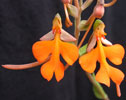
Pod Parent Flowers |
Click to Enlarge
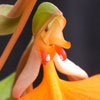
Pod Parent Closeup of Flower |
Click to Enlarge
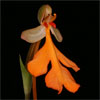
Offspring 'Sunset' Flower |
Click to Enlarge
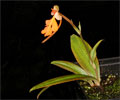
Offspring 'Sunset' Blooming Plant |
Click to Enlarge
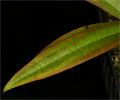
Offspring 'Sunset' Leaf |
| Offspring photos are siblings of the plants you would receive. |
|
|
|
| |
Culture Notes from Donor: Parent plant: Grown in a greenhouse with minimum 60°F and maximum 90-92°F. Requires a dry dormancy after flowering. Tuberous roots adhere tightly to small rocks or sides of the pot.
Comments: These capsules formed spontaneously, but there were not any other habenarias or related species blooming in the greenhouse at the same time.
Parent plant: A deciduous terrestrial species from Thailand. This orange-flowered plant with green sepals is the true Habenaria rhodocheila. Plants with all-red, yellow, or pink flowers have been described as separate species by Eric Christenson. Small plant.
For additional origin/habitat information supplied courtesy of
Charles and Margaret Baker, see further below, near the bottom of this page.
|
Temperatures we attempt to use in the lab & greenhouse:
| For Species: |
|
Spring, Summer, Autumn: days average 86°F, nights 72°F; best fit is Warm 90-70°F
(Source:
Baker's Web OSC) |
| For Species: |
|
Winter: days average 84°F, nights 54°F; best fit is Intermediate 83-60°F
(Source:
Baker's Web OSC) |
|
About the name...
| Etymology of |
Habenaria |
|
From Latin "habena" reins, referring to the straplike lip divisions.
(Source:
Pridgeon 1992) |
| Pronunciation of |
Habenaria |
|
hab-e-NARE-ee-a
(Source:
Pridgeon 1992) |
| Pronunciation of |
rhodocheila |
|
roe-doe-KYE-la
(Source:
Hawkes 1978) |
|
If you would like to direct someone to this web page, please copy and paste this URL into your email:
http://troymeyers.com/d?014297
| Flask Information |
| Availability: |
We have sold all of the flasks for this item. |
| You should: |
Consider getting individual plants or compots instead of a flask.
You can place a "Notify Flask Recipients" Request, and either we or a flask recipient may contact you when plants are available.
You may also place a "Notify Retries" Request, and if an identical pollination (the same parents) is done again, we'll let you know.
You may reserve a flask, but it's very unlikely you'll get one ...this could only happen if we found a flask that we didn't know we had. |
| Yield Estimate: |
120 plants (based on flask surveys done 07/21/2004 )
|
| Plantlet Sizes: |
From many flasks 10 - 30 mm plants (based on flask surveys done 07/21/2004 )
From one most recently surveyed flask 10 - 30 mm (07/21/2004)
|
|
You might also want to:
|
View the seed assay for this item.
View items of the same species.
View items of the same genus.
|
| Ordering Information |
| You are not currently logged in. |
|
You must be a registered user and be logged in to reserve a flask or place a notification request. Please log in:
|
|
|
|
|
|
| |
The origin/habitat information below is supplied courtesy of Charles and Margaret Baker
The following information is based on the name of the plant provided by the donor, and assumes that the name is correct. If the plant has been misidentified, then the following information may not be correct.
This text is copyrighted by the Bakers and may not be reproduced without permission.
ORIGIN/HABITAT: Thailand, Laos, Cambodia, Vietnam, Malaya, China, and the
Philippines. This orchid has been found at many locations in all parts of
Thailand from the mountains in the north at elevations of 1950-3600 ft.
(600-1100 m) to east, southeast, and southern mainland, with distribution
extending to many locations on the Thai peninsula. In Malaya, plants have
been collected as far south as the state of Pinang in the northwest part
of the country. In Vietnam, plants have been collected at numerous
locations, including Quang Tri and Dalat, at 1500-2300 ft. (450-700 m) in
northwest near the border with Laos. Plants are often lithophytic, growing
on mossy rocks.
More about this information and the Bakers...
|
|
|
| |
|
|
|